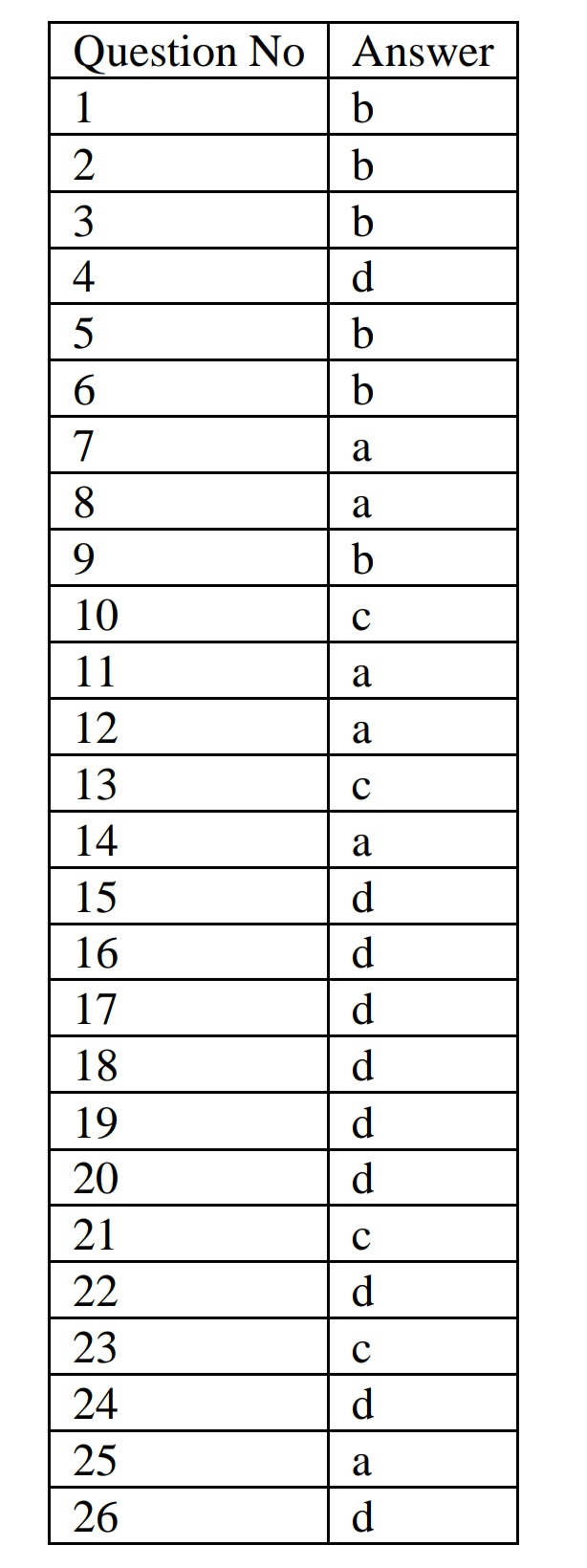1) Acacia is an emulsifying agent of a class of:
a) Surfactants
b) Polysaccharides
c) Sterol containing substance
d) Finely divided solids
2) Ratio of oil: water: gum for Mineral oil Emulsion is
a) 4:2:1
b) 3:2:1
c) 1:2:1
d) 2:2:1
3) ‘Small particles in suspension seem to disappear and large particles grow after repeated temperature cycling’ refers to
a) Stoke’s law
b) Ostwald ripening
c) Gibbs equation
d) Stokes Einstein Law
4) Pseudomonas aeruginosa can contaminate cosmetic products having pH:
a) 6-8
b) 3-5
c) 6-10
d) 3-11
5) Schedule M(II) of D and C Act:
a) lists the colors used in Cosmetics
b) gives the guideline for manufacturing Cosmetics
c) is a list of Cosmetic Products
d) gives labelling details for cosmetic products
6) Oral pharmaceutical Suspensions are:
a) Thermodynamically stable
b) Thermodynamically unstable
c) kinetically unstable
7) Dispersed phase in a biphasic liquid is:
a) Internal phase
b) External phase
c) Emulsifier
d) Viscolizer
8) An emulsifier having a HLB value of 12 promotes formation of:
a) o/w emulsion
b) w/o emulsion
c) microemulsion
d) Multiple emulsion
9) Deflocculated suspensions tend to exhibit:
a) plastic or pseudoplastic flow
b) dilatant flow
c) plastic flow
b) pseudoplastic flow
10) List of Cosmetic products to be manufactured as per recommended standards is given in:
a) Schedule M
b) Schedule Q
c) Schedule S
d) Schedule M (II)
11) A stable suspension with a low rate of sedimentation can be obtained by:
a) by reducing the size of the dispersed particles and by increasing viscosity of the dispersion/continuous phase
b) by reducing the size of the dispersed particles and viscosity of the dispersion/continuous phase
c) by increasing the size of the dispersed particles and viscosity of the dispersion/continuous phase
d) by increasing the size of the dispersed particles and by decreasing viscosity of the dispersion/continuous phase
12) Electrolytes such as KCl and NaCl are:
a) Flocculating agents
b) Dispersants
c) Deflocculating agents
d) Wetting agents
13) DLVO theory explains:
a) Rate of sedimentation
b) Wetting phenomenon
c) Particle-particle interactions
d) rate of precipitation
14) Permeation of drug through skin is directly proportional to
a) partition coefficient
b) molecular size
c) molecular weight
d) particle size
15) Following is the dosage form intended for rectal administration
a) Tablet
b) Capsule
c) Lozenge
d) Suppository
16) Following are the examples of Hydrocarbon bases except
a) ozokerite
b) mineral oil
c) petrolatum
d) lanolin
17) Drug penetration through skin can be altered by:
a) by decreasing resistance of stratum corneum
b) by changing hydration of stratum corneum
c) by changing the structure of lipids
d) All of the above
18) Following factors affect systemic absorption of drug following rectal administration except
a) pKa of drug
b) lipid water partition coefficient
c) colonic fluid
d) gastrointestinal pH
19)Following are the commonly used suppository bases except:
a) Cocoa butter
b) Gelatin
c) Polyethylene Glycol
d) Lanolin
20) Following are the objectives of performing sensorial testing except:
a. interpret responses to the product based on senses
b. the testing is done to assess the overall acceptance of consumers
c. Sensorial testing is done on cosmetic products
d. sensorial testing is done to check the safety of product
21) Following is the commonly used propellant in aerosols :
a. Nitrogen
b. Neon
c. Hydrofluoroalkanes
d. Oxygen
22) Following are the tests performed in sensitivity testing of cosmetic except:
a. Diagnostic test
b. Prophetic Patch test
c. Photopatch test
d. Softness test
23) Following is the quality control tests performed on aerosols:
a. Disintegration
b. Melting point
c. Discharge rate
d. Dissolution
24) Aerosol pack comprises of the following except
a. Can
b. Metering valve
c. Actuator
d. Bottle
25) Following is the quality control test performed on suppositories:
a. Melting point
b. Discharge rate
c. Flash point
d. Disintegration
26) Semisolids are evaluated for the following tests except:
a. pH
b. viscosity
c. spreadability
d. crushing strength

